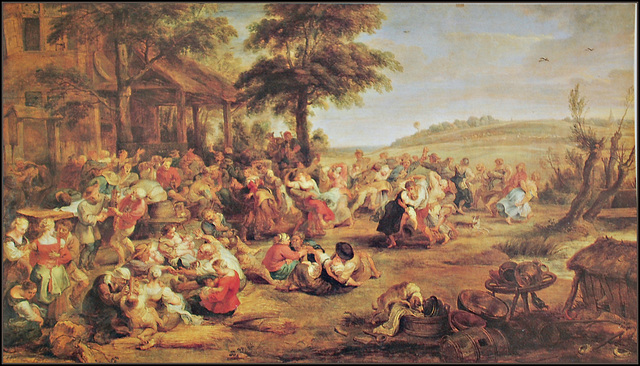^ ^
^ ^
Marx
Punishing Serfs
Streetcar
^ ^
The Swing
The Calais Pier
The Threshing Floor
The Stone Breakers
Le moulin de la Galette a Montmrtre
The Boating Party
The Haywain
^ ^
^ ^
^ ^
^ ^
^ ^
The Grand Constructors
Inflation
^ ^
^ ^
The Card Players
The Starry Night
The Haywain
^^
Gorbachev and Reagan
Ἱπποκράτης / Hippokrátēs
Map 4.1
The Anatomy Lesson ~ Rambrandt (CA 1632)
^ ^
^ ^
^ ^
^ ^
^ ^
^ ^
^ ^
^ ^
Keywords
Authorizations, license
-
Visible by: Everyone -
Attribution + non Commercial
- Photo replaced on 16 Jun 2020
-
43 visits
Art: A mirror of Society


In painting the baroque reached maturity early with Peter Paul Rubens. Court painter to James I and Charles I of England and to Louis XIII and Marie de’Medici of France, Rubens also illustrated many classical and rural subjects. In Country Fair (1635), below, against an immense landscape twilight descends, bringing to a close the peasant’s day of celebration (Cliches des Muses Nationalaux-Paris)
- Keyboard shortcuts:
Jump to top
RSS feed- Latest comments - Subscribe to the comment feeds of this photo
- ipernity © 2007-2024
- Help & Contact
|
Club news
|
About ipernity
|
History |
ipernity Club & Prices |
Guide of good conduct
Donate | Group guidelines | Privacy policy | Terms of use | Statutes | In memoria -
Facebook
Twitter

Art also manifests the changes and continuity of European life; as values changed in Europe, so didmajor artistic themes. Europeans of the sixteenth and seventeenth centuries remained deeply religious and showed a new interest in the world around them; their middle-class attitudes and experiences and their appreciation of agricultural life replaced the activities and interests of a small, wealthy, cultural elite as the subject matter of art. The scenes of everyday life presented in seventeenth century genre painting were considered interesting in themselves and, as the works following by Siberechts and Van Ostade support worthy of high art.
Just as Reniassance princes had used art to memorialize themselves, so in the later seventeenth century all the arts were organized to exalt and glorify the Sun King, Louis XIV. As the following (above) painting by Lebrum, Louis XIV’s visit to the Gobelin Factory, demonstrates, art served the image of the French absolute monarch as the personalization of the French State. Art thereby reflected the political ideal of the times. Knows as the court baroque style, it spread throughout France, England, Germany, Italy, and Spain. Politics had triumphed over other expression of cultural life. ~ Page 601